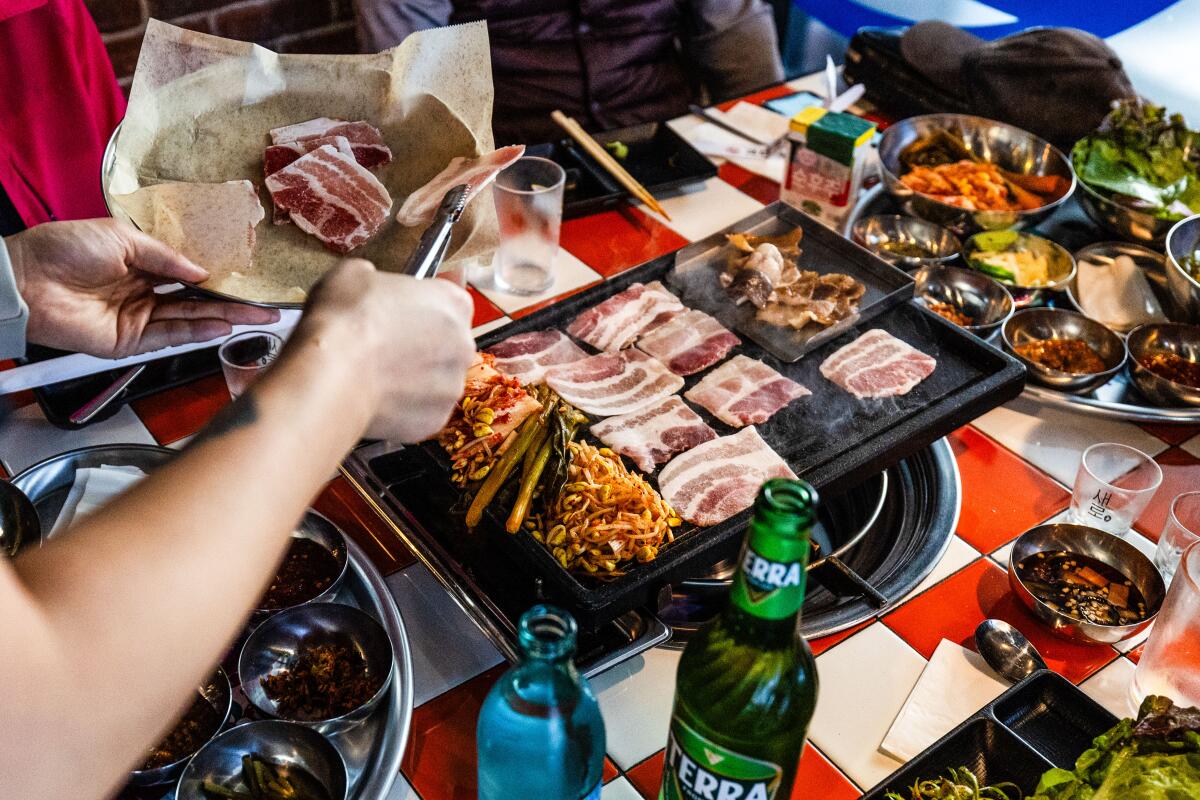Farm-to-table restaurants are becoming increasingly popular in Los Angeles, and for good reason. These restaurants offer a unique dining experience that is both delicious and sustainable. By using fresh, local ingredients, farm-to-table restaurants can create dishes that are full of flavor and nutrients. In this article, we will explore the farm-to-table concept, discuss the benefits of sourcing locally, and provide tips for building relationships with local farmers. We will also share some of the best farm-to-table restaurants in Los Angeles. Whether you are a foodie or simply looking for a more sustainable way to dine out, read on to learn more about the farm-to-table movement in Los Angeles.
Case Studies of Successful FarmtoTable Models
There are many successful farm-to-table restaurants around the world. Here are a few examples:
Alice Waters’ Chez Panisse
Chez Panisse is a restaurant in Berkeley, California, that has been a pioneer in the farm-to-table movement since it opened in 1971. The restaurant’s menu changes daily based on what is available from local farmers. Chez Panisse has been praised for its delicious food, its commitment to sustainability, and its role in inspiring other restaurants to adopt the farm-to-table model.
- Related: Case Studies of Successful Farm-to-Table Models
- Related: Farm-to-Table Trends in Fine Dining
Dan Barber’s Blue Hill at Stone Barns
Blue Hill at Stone Barns is a restaurant in Pocantico Hills, New York, that is known for its innovative farm-to-table cuisine. The restaurant’s menu is based on what is harvested from the restaurant’s own farm, Stone Barns Center for Food and Agriculture. Blue Hill at Stone Barns has been praised for its delicious food, its commitment to sustainability, and its role in educating diners about the importance of sustainable agriculture.
| Name | Location | Type of Cuisine |
|---|---|---|
| Chez Panisse | Berkeley, California | French |
| Blue Hill at Stone Barns | Pocantico Hills, New York | American |
| The Farm at Tassajara | Carmel Valley, California | Zen Buddhist |
The Farm at Tassajara
The Farm at Tassajara is a Zen Buddhist monastery and retreat center in Carmel Valley, California. The monastery’s kitchen prepares meals for the monks and guests using ingredients from the monastery’s own farm. The Farm at Tassajara is known for its delicious food, its commitment to sustainability, and its role in teaching people about Zen Buddhism and mindful eating.
These are just a few examples of the many successful farm-to-table restaurants around the world. The farm-to-table movement is growing in popularity as more and more people become interested in eating food that is fresh, local, and sustainable.

Building Relationships with Local Farmers
How to Build Relationships with Local Farmers
Building relationships with local farmers is essential for any farm-to-table restaurant. By getting to know the farmers who grow your food, you can learn more about their farming practices and ensure that you are getting the highest quality ingredients. You can also support local farmers and the local economy by buying your food from them.
There are many ways to build relationships with local farmers. One way is to visit their farms and get to know them in person. You can also attend farmers’ markets and talk to the farmers who are selling their products. You can also join a community supported agriculture (CSA) program, which allows you to buy a share of a farmer’s harvest each week.
- Related: Building Relationships with Local Farmers
- Related: Farm-to-Table Trends in Fine Dining
Benefits of Building Relationships with Local Farmers
There are many benefits to building relationships with local farmers. By getting to know the farmers who grow your food, you can:
- Learn more about their farming practices
- Ensure that you are getting the highest quality ingredients
- Support local farmers and the local economy
- Get a better understanding of where your food comes from
- Build a sense of community with other people who are interested in supporting local food
| Benefit | Description |
|---|---|
| Learn more about their farming practices | By getting to know the farmers who grow your food, you can learn more about their farming practices. This can help you make informed decisions about the food you eat. |
| Ensure that you are getting the highest quality ingredients | By building relationships with local farmers, you can ensure that you are getting the highest quality ingredients. Local farmers are often more likely to use sustainable farming practices and to grow their food without the use of pesticides or herbicides. |
| Support local farmers and the local economy | By buying your food from local farmers, you can support local farmers and the local economy. Local farmers are an important part of the community, and they provide a valuable service by growing food for us to eat. |
Building relationships with local farmers is a great way to learn more about your food and to support your local community. By getting to know the farmers who grow your food, you can ensure that you are getting the highest quality ingredients and that you are supporting sustainable farming practices.

Menu Planning in Farm-to-Table Cuisine
Menu planning in farm-to-table cuisine is a bit different than menu planning for other types of restaurants. Because the menu is based on what is available from local farmers, the menu changes frequently. This can be a challenge, but it also allows chefs to be more creative and to offer diners a unique dining experience.
When planning a farm-to-table menu, it is important to consider the following factors:
- The seasonality of ingredients
- The availability of ingredients from local farmers
- The preferences of your diners
Once you have considered these factors, you can start to develop a menu that is both delicious and sustainable.
Here are a few tips for menu planning in farm-to-table cuisine:
- Start with a base of fresh, seasonal ingredients.Read more about successful farm-to-table models
- Be flexible and willing to change your menu based on what is available from local farmers.Learn more about farm-to-table trends in fine dining
- Talk to your diners about their preferences and be willing to accommodate special requests.
- Price your menu items fairly to reflect the cost of fresh, local ingredients.
- Promote your farm-to-table menu to your diners and let them know about the benefits of eating locally sourced food.
| Tip | Description |
|---|---|
| Start with a base of fresh, seasonal ingredients. | The foundation of any good farm-to-table menu is fresh, seasonal ingredients. When planning your menu, start by talking to local farmers about what is in season. |
| Be flexible and willing to change your menu based on what is available from local farmers. | One of the challenges of farm-to-table cuisine is that the menu is constantly changing. This can be a challenge, but it also allows chefs to be more creative and to offer diners a unique dining experience. |
| Talk to your diners about their preferences and be willing to accommodate special requests. | When planning your menu, it is important to consider the preferences of your diners. Talk to your diners about what they like and dislike, and be willing to accommodate special requests. |
Menu planning in farm-to-table cuisine can be a challenge, but it is also a rewarding experience. By following these tips, you can create a menu that is both delicious and sustainable.

Sourcing Locally: Challenges and Benefits
Challenges of Sourcing Locally
There are several challenges associated with sourcing locally. One challenge is that it can be difficult to find local farmers who grow the specific ingredients that you need. Another challenge is that local ingredients can be more expensive than ingredients that are shipped in from other regions. Finally, sourcing locally can be more time-consuming than sourcing ingredients from a large distributor.
- Related: Case Studies of Successful Farm-to-Table Models
- Related: Farm-to-Table Trends in Fine Dining
| Challenge | Description |
|---|---|
| Difficulty finding local farmers | One challenge of sourcing locally is that it can be difficult to find local farmers who grow the specific ingredients that you need. This can be especially challenging for restaurants that are located in urban areas. |
| Higher cost | Another challenge of sourcing locally is that local ingredients can be more expensive than ingredients that are shipped in from other regions. This is because local farmers often have higher production costs than large-scale farms. |
| Time-consuming | Finally, sourcing locally can be more time-consuming than sourcing ingredients from a large distributor. This is because local farmers often have smaller operations and may not be able to deliver ingredients on a regular schedule. |
Benefits of Sourcing Locally
Despite the challenges, there are also several benefits to sourcing locally. One benefit is that local ingredients are often fresher and more flavorful than ingredients that are shipped in from other regions. Another benefit is that sourcing locally can help to support the local economy. Finally, sourcing locally can help to reduce the environmental impact of your restaurant.
- Related: Farm-to-Table Baking and Desserts
- Related: Building Relationships with Local Farmers
“Sourcing locally is a great way to support your local community and reduce the environmental impact of your restaurant,” says Chef Alice Waters of Chez Panisse. “It’s also a great way to get fresh, flavorful ingredients that your customers will love.”
| Benefit | Description |
|---|---|
| Fresher and more flavorful ingredients | One benefit of sourcing locally is that local ingredients are often fresher and more flavorful than ingredients that are shipped in from other regions. This is because local ingredients do not have to travel as far, which means that they retain more of their nutrients and flavor. |
| Support the local economy | Another benefit of sourcing locally is that it can help to support the local economy. When you buy food from local farmers, you are helping to keep money in the community. This can help to create jobs and support local businesses. |
| Reduce environmental impact | Finally, sourcing locally can help to reduce the environmental impact of your restaurant. This is because local ingredients do not have to be transported as far, which reduces greenhouse gas emissions. |

Final Thought
The farm-to-table movement is a growing trend in Los Angeles, and for good reason. Farm-to-table restaurants offer a unique dining experience that is both delicious and sustainable. By using fresh, local ingredients, these restaurants can create dishes that are full of flavor and nutrients. If you are looking for a more sustainable way to dine out, be sure to check out one of the many farm-to-table restaurants in Los Angeles. You won’t be disappointed.




